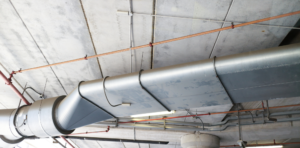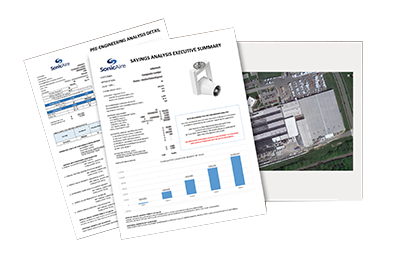The September 7, 2020 deadline to have your Dust Hazard Analysis (DHA) complete has come and gone. In fact, we’re nearly five months past and into a new year.
New Dust Hazard Analysis Requirements

If you’re just now hearing about this, let us catch you up. The 2019 NFPA 652 standard had a deadline requiring existing processes and facility compartments to complete a DHA by September 7, 2020 (see 7.1.1.2). It also required owners/operators to “demonstrate reasonable progress each year in completing DHAs prior to the deadline set in 7.1.1.2”.
DHAs are also required indirectly by the 2018 version of the International Fire Code, so failing to complete one could be treated as a Fire Code violation.
What is “Willful or Repeated?” Essentially, if your facility was aware of the deadline and made no effort to start the DHA process, you could be at fault. Even worse, this penalty is considerably more than the cost of a DHA, so it’s a risky move to ignore it and hope for the best.
In short, if you haven’t completed a DHA, you should immediately get started as it’s unlikely inspectors will be showing much leniency.
So, what are OSHA Inspectors looking for when it comes to combustible dust?
We know there’s more than just NFPA and IFC to contend with. There’s a litany of regulations you need to meet every year. But when an OSHA inspector makes their surprise visit, you need to be prepared to answer questions related to combustible dust.
Here’s what they’ll be looking for.
1 – Dust Hazard Analysis
As we discussed earlier, you will need to complete a DHA to satisfy NFPA 652. In short, it helps you identify the risk level of a combustible dust event so you can put a plan in place to eliminate or mitigate the risk.
A DHA has several parts, but it requires you to consider the following:
- The combustibility of your dust measured by its deflagration.
- The likelihood of a combustible dust event in various areas of your facility based on the
- quantity of dust in the atmosphere,
- the chances dust could disperse into a cloud,
- and if there is anything that might ignite the dust.
- Your plans to prevent combustible dust explosions by mitigating these risks.
These plans may include regular housekeeping, dust collection systems, dust buildup prevention systems, or a combination of these to keep dust buildup below required limits.
All of this should be completed and documented by your team or a third-party. The NFPA standard is very open to who should be involved in the DHA. Ideally, it should involve people who are familiar with operations in the facility and understand the appropriate NFPA guidelines.
2 – Fugitive Dust Buildup
The OSHA inspector will want to see a DHA, but they’ll also be looking for areas of concern within the facility. While the limits differ for specific industries, the rule of thumb is, can they tell the color of the surface beneath the dust without wiping it up. Any buildup thicker than this will likely cause them to start inspecting more closely.
The most likely area of concern for combustible dust is in overhead areas. Depending upon your ceiling’s height, it may not be feasible for the inspector to see everything. Any obvious signs of dust clinging to support wires, beams, and HVAC ducts could cause concern.
If your plan identifies areas of significant risk in your facility, it’s likely the OSHA inspector will pay close attention to these spaces. That means you’d better be paying attention to them as well.
3 – Probable Ignition Sources
In addition to areas where dust may buildup or linger in the air, the inspector will also pay close attention to places where a fire could start. For production and manufacturing facilities, this could be a long list.
Pay close attention to spaces where sparks could be generated, even if they are enclosed. Any metal on metal friction could be a source of concern. Also, anything that produces high heat output levels should be a concern, especially if dust may come to rest on these surfaces.
You know your operations and your processes, so you will know best where these dangers lie. Make sure to note them in your DHA, and you are doing your best to minimize the amount of combustible dust that builds up there.
4 – Clear Efforts to Prevent Combustible Dust Explosions
Knowing you are at risk is one thing. Doing something about it is another thing altogether.
Your DHA will identify issues and lay out your plans to keep those issues from becoming a headline.
Here are some of the common ways you can mitigate these risks.
- Housekeeping: Perhaps the most obvious way to limit dust buildup is to clean it. While a few companies may pay outside contractors to perform a deep clean periodically, most take this task on themselves. Using manual labor and various equipment, dust is either collected or moved to the floor, making it easier to clean. This is also an expensive and time-consuming way to manage dust buildup.
- Dust Collection: In areas where there is significant dust creation, a collection system may be necessary. This system vacuums up the dust and moves it outside the facility or into a contained space approved for collection.
- Dust Containment: To prevent pockets of combustible dust, sometimes the easiest thing to do is to keep it from escaping. Using low-tech methods such as plastic bags or covers, you can keep dust that is likely to end up suspended in the air inside its container. This minimizes the potential of a secondary explosion.
- Dust Buildup Prevention: In the most recent NFPA 652 Standard, one of the approved methods of minimizing risk is the use of SonicAire’s dust control fans. These fans prevent buildup by creating an air barrier that keeps dust from floating into overhead spaces.
- Explosion Protection: Especially in tight spaces used in production where it is impossible to limit suspended dust particles, your facility can use blow-out panels to allow pressure to escape, preventing a structural collapse in the event of an explosion. Electrical equipment rated for “Class II” areas can be very expensive, but it’s designed to contain sparks, preventing explosions.
How prepared are you?
Even if you’ve completed your DHA, it doesn’t mean you’re prepared. If the analysis indicated areas of concern, you still have to make an effort to eliminate these risks. You need a plan to prevent fugitive dust buildup or schedule more regular housekeeping to eliminate combustible dust. And you must be clearly executing that plan.
Additional housekeeping and safety measures may appear to be the more straightforward course, but it comes with drawbacks. Every time you shut down production to clean, it costs your business productivity and the labor to get the work done.
Dust collection systems are an expensive investment and don’t always get 100% of the particles.
SonicAire’s Dust Control Fans are an NFPA 652 approved method of preventing buildup in overhead spaces. If this is an area of concern, please reach out to one of our Dust Control Specialists who can walk you through the benefits and return on your investment.
An OSHA inspector may not be walking through the door tomorrow, but it’s in your best interest to adequately prepare.



